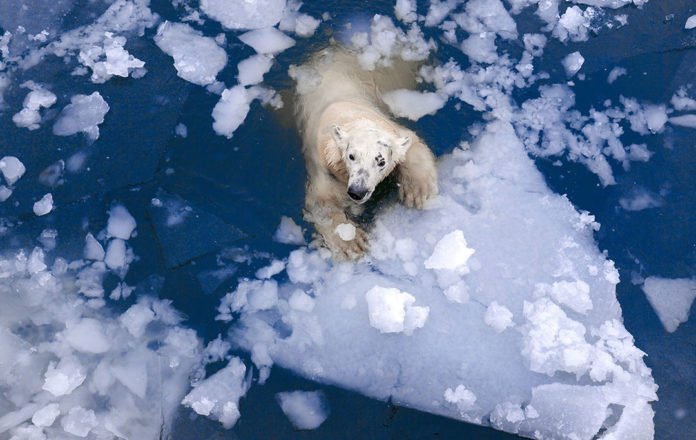A mystery that troubled scientists for more than a decade have now solved. The peak concentration of Methylmercury in the enriched layer in the Canadian Arctic is highest in the west and lowest in the east, mirroring the mercury trend in marine animals.
The trend is seen throughout the food web, from the tiny zooplankton that drifts along ocean currents to large mammals like polar bears.
It is important to be researched on because mercury is a contaminant of global concern and communities in the North rely on the ocean for food. Mercury can cause reproductive problems in some animals, severe neurological damage in people and hamper the development of infants.
Earlier studies had tried to explain the east-west difference by looking at where the mercury that winds up in the ocean comes from. Also, previous research suggested that marine animals in the western Canadian Arctic contain more mercury because the region receives more mercury from a variety of sources, including atmospheric emissions from eastern Asia, river discharge from large watersheds such as the Mackenzie and coastal erosion and permafrost thawing.
Whereas, the mercury from all these sources exists almost exclusively in its inorganic form, for instance, as mercury vapor and mercury that is bound to dust particles.
Eventually, a new study found the mystery solved in the ocean itself.
In the Arctic, marine mammals such as polar bears, beluga whales and seals are an integral part of the traditional subsistence hunt and the culture of Northern Indigenous peoples.
With Arctic communities bearing the brunt of the impact of climate change and global industrialization, the high levels of contaminants, mercury, in particular, found in these animals and also in people, has received a lot of attention.
Oftentimes, Northern Indigenous mothers and women of child-bearing age have blood mercury levels that exceed the safe limit. Maintaining the nutritional and cultural benefits of marine country food, such as seal and whale, while mitigating the potential health risks from mercury has become a major challenge to Indigenous peoples in the Arctic.
Once it’s in the ocean, however, some inorganic mercury can be converted to an Organic form, called Methylmercury. Not only is Methylmercury taken up more efficiently by plankton and other microorganisms, but it can build up, or bioaccumulate, in organisms as it moves along the food web through a process known as biomagnification. As it does, it tends to inflict more harm on predatory fish, birds, and mammals.
Methylmercury, on the other hand, shows very revealing distribution patterns: its concentration is lowest at the sea surface, increases to a maximum at depths between 100 and 300 meters, and then decreases towards the bottom of the ocean.
This pattern, where an ocean layer below the surface is enriched with methylmercury, has been seen in other oceans. What makes our discovery different is that the “Methylmercury-enriched layer” in the Arctic occurs at much shallower depths than elsewhere.
The shallowness of the Methylmercury-enriched layer is important, as it lies within the habitat of zooplankton and other organisms near the bottom of the food web. This allows Methylmercury to be readily taken up by these animals and subsequently biomagnified in mammals.
Yet their study implies that it will take a long time for mercury levels in Canadian Arctic marine mammals to decrease, even if the convention is fully implemented. Recovery will depend very much on environmental and climatic processes such as those that convert inorganic mercury to Methylmercury.
